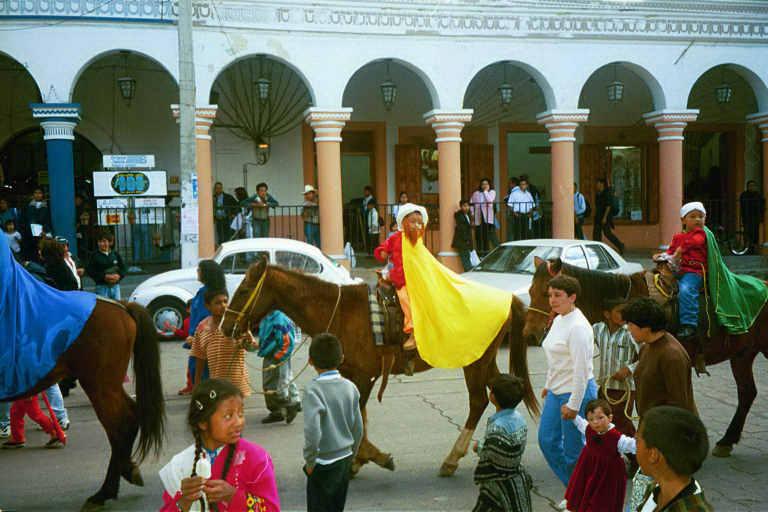The part of San Cristobal that I would consider the real “city” only goes for about a ten-block radius around the main square. Once you get outside of that area, you’re in less attractive--and less safe--neighborhoods, and then the outskirts of the city.
Taking my guidebook’s advice, I decide to stay in the central area. While wandering, I even manage to find a place here with an Internet connection so I can check my email! Fortunately, my Spanish phrasebook gives me enough of the language that I can manage to survive here.
The city is easy to explore, since the streets form a grid. Some of the streets are even open only to pedestrians so it’s safer to walk around, and many streets are cobblestone, another example of the history of the city contrasted with modern conveniences like the Internet cafe and the satellite dishes that adorn some of the buildings.
In addition to the Internet cafe, I find a lot of interesting little shops to explore. Some of the indigenous residents of the area, in addition to agriculture, practice arts and crafts similar to what their ancestors did, and they bring their products into San Cristobal to sell. Some of the neighborhoods, or barrios, in the city have their own specific artisan trades, like woodcarving or ironwork, and people who live in those barrios sometimes sell their wares in the shops.
The central part of the city includes a number of other businesses as well, like language schools, travel agencies, and museums. The city has drawn tourists since the 1970s, though with the Zapatista conflict, I suspect tourists might not be quite as eager to visit as they once were. The gorgeous scenery, including many mountains, of the region might still be appealing enough for people to visit, though.
Many factors make Chiapas in general, and San Cristobal in particular, different from the rest of Mexico. The most obvious is the spoken Indian language that coexists here with Spanish. In some of the less urban parts of Chiapas, Spanish is actually spoken as a second language, with the indigenous language being the primary. But the location also is somewhat unique. The rain forest is a large part of the area, as well as the mountains. San Cristobal itself is the highest point in the region, which means sometimes temperatures here are much colder than in nearby areas like Oaxaca.
Click prev or next to continue Johnny Monsarrat Mexican Trip.






